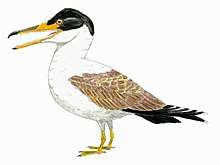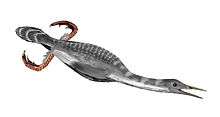Zhyraornis
Zhyraornis is a genus of prehistoric bird from the late Cretaceous period (middle Turonian, 92 mya).[1] Its fossils have been found in Bissekty Formation deposits near Dzharakuduk in the Kyzyl Kum, Uzbekistan. Two species have been assigned to this genus: Zhyraornis kashkarovi and Zhyraornis logunovi. Both are known only from partial pelvic bones (synsacra).
| Zhyraornis | |
|---|---|
| Scientific classification | |
| Kingdom: | Animalia |
| Phylum: | Chordata |
| Clade: | Euornithes |
| Suborder: | †Zhyraornithi Nesov, 1992 |
| Family: | †Zhyraornithidae Nesov, 1984 |
| Genus: | †Zhyraornis Nesov, 1984 |
| Type species | |
| †Zhyraornis kashkarovi Nesov, 1984 | |
| Species | |
| |
Classification
The relationships of this bird are unresolved. Paleontologist Lev Nesov originally classified in a distinct family (Zhyraornithidae)[2] and later suborder (Zhyraornithi)[3] within the order Ichthyornithiformes.[2] Kurochkin (1996) considered it to belong to the Enantiornithes, specifically the family Alexornithidae.[4] In 2006, Kurochkin re-classified it as a primitive member of the lineage leading to modern birds, the Ornithuromorpha.[5]
References
- Averianov, A.O. (2010). "The osteology of Azhdarcho lancicollis Nessov, 1984 (Pterosauria, Azhdarchidae) from the Late Cretaceous of Uzbekistan." Proceedings of the Zoological Institute of the Russian Academy of Sciences, 314(3): 246-317.
- Nessov, L. (1984). ["Upper Cretaceous pterosaurs and birds from Central Asia."] Paleontologicheskii Zhurnal, 1: 47-57.
- Nessov, L. (1992). "Review of localities and remains of Mesozoic and Paleogene birds of the USSR and the description of new findings." Russkii Ornitologicheskii Zhurnal, 1(1): 7-50.
- Kurochkin (1996). "A new enantiornithid of the Mongolian Late Cretaceous, and a general appraisal of the Infraclass Enantiornithes (Aves)." Russian Academy of Sciences, special issue. 50 pp.
- Kurochkin (2006). "Parallel evolution of theropod dinosaurs and birds." Entomological Review, 86(suppl. 1): S45-S58.
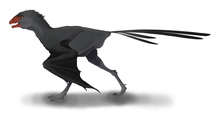

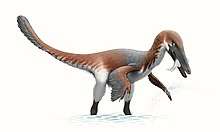
.png)



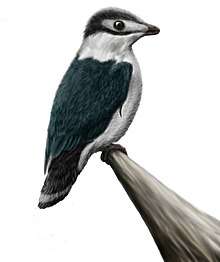

.png)

